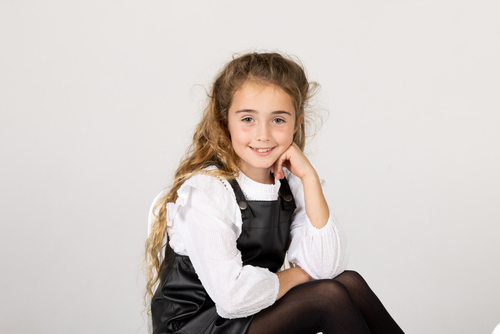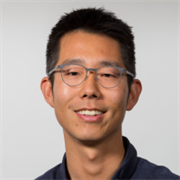Childhood Cancers
Providing hope for little kids with the big C
Why is it a problem?
Why is it a problem?
How can cancer develop?
Our bodies are made of millions of tiny building blocks called cells which divide and multiply throughout our
life, each type of cell has a special function.
- Sometimes things can go wrong in a cell’s DNA which tells the cell to grow, divide and multiply uncontrolled .
- Most childhood cancers are not inherited.
Treating children and young people with cancer
The aim of treatment for most childhood cancers is cure – treatment may include chemotherapy, surgery, radiotherapy and sometimes immunotherapy and bone marrow transplantation There are two treatment centres for childhood cancers in Aotearoa: Starship’s Blood and Cancer Centre in Auckland (which treated 75% of Kiwi kids diagnosed with cancer in 2019), and the Children’s Haematology Oncology Centre in Christchurch (which treated the other 25%).
What are the most common types of childhood cancer?
Cancer is not one disease, but dozens of different diseases, each with their own behaviour, response to treatment and outcome. The most common types of childhood cancer are:
- leukaemias (cancer of the white blood cells)
- brain tumours (glioma and medulloblastoma)
- lymphomas (cancer of the lymphatic system)
- neuroblastoma (cancer of the nerve cells)
- soft tissue sarcomas (a rare type of cancerous tumour)
- bone cancers (osteosarcoma, Ewing’s sarcoma)
- renal
Did you know?
Since 1971 Cure Kids has funded over NZD $4.5m in child cancer research!
WHAT ARE WE DOING TO HELP?
Here are just some of the research projects we are currently funding to help New Zealand kids with cancer.
A ‘game changing’ approach to treat an aggressive and incurable form of brain cancer
High-grade glioma (a type of tumour) can affect children
of all ages and occurs equally in girls and boys. Treatment
is intensive – generally involving a combination of surgery, radiotherapy, and chemotherapy. Building on previous research showing that a particular class of ‘dyes’ can cross the blood-brain barrier and gather in tumour tissues, what Dr Jose and Dr Choi found is promising. “When we chemically attached an anti-cancer drug to these dyes,” says Dr Jose, “the resulting ‘drug-dye conjugate’ can cross the blood-brain barrier, and accumulate in tumour tissues in the brain.” “We envision that the proposed research, if successful, can significantly improve survival outcomes for patients suffering from paediatric high-grade glioma,” says Dr Jose.
Precision paediatric cancer project
Paediatric haematologist-oncologist Dr Andy Wood, from the University of Auckland, is leading The Precision Paediatric Cancer Project (PPCP) – a New Zealand first of its kind. This clinical trial – jointly funded by Child Cancer Foundation and Cure Kids – seeks to use a new diagnostic test called Next-Generation Sequencing (NGS) to identify the genetic mutations causing cancer in the children who participate in the trial. If specific mutations are identified, this information will be used to treat the child’s cancer in the most targeted way possible.
Investigating better ways to treat acute myeloid leukaemia
Dr Wood and his team are creating models of acute myeloid leukaemia to study mutations seen in patients. These new models of leukaemia in cells, zebrafish and mice will help to increase understanding of the pathology of acute myeloid leukaemia and hopefully find new drug targets. This research will hopefully lead to the development of preclinical drugs and, eventually, safer and more gentle treatments for the kids and families burdened with cancer.
This research has the potential to lead to the development of preclinical drugs and, eventually, safer and more gentle treatments for the kids and families burdened with cancer.
Identification of therapeutic pathways to improve leukaemia treatment
Many childhood cancers are life-threatening, and current treatments are often insufficient to fight off the rapidly multiplying cancerous cells. Conventional chemotherapy still fails in approximately one-fifth of patients who’ve been diagnosed with Acute Lymphoblastic Leukaemia (known as ‘ALL’). Professor Ian Morrison and his colleagues have investigated epigenetic events (DNA methylation) in order to better understand the onset of ALL, and in doing so, hope to target specific pathways and improve treatment.

Lucca was diagnosed with an extremely rare and highly aggressive cancer called Epethelioid Inflammatory Myofibroblastic Sarcoma when she was just 16 months old.
At the time here were only nine other cases reported worldwide. Traditional chemotherapy had not proved effective in treating these cases and the outlook for Lucca looked bleak.
However, after life-saving surgery which removed 95% of Lucca’s tumour and a month stay in Starship hospital, Lucca's family were introduced to Dr. Andy Wood, a world-leading research oncologist that would save her life. Dr. Wood leads The Precision Paediatric Cancer Project PPCP, which aims to advance the standard of care in New Zealand by finding highly targeted treatment options for children with cancer – for whom standard treatments have failed.
Lucca was given a new groundbreaking treatment that targeted the remaining parts of her tumour and kept the highly aggressive cancer at bay. After three more years of treatment, surgeries and uncertainties, Lucca continued to beat the odds and began to thrive.
Lucca is now grown up and a happy girl that loves learning, playing with her friends, dancing, netball, her little brother Harrison and is learning to surf.

Help fund researchers like Andrew.
Every cent helps, no matter how small.
Big Research
We are currently supporting over $16 million of child health research projects.
Learn more-
Preterm Health
4 Active projects$464.8K -
Childhood Cancers
2 Active projects$3.2M -
Maternal and Infant Conditions
4 Active projects$751.4K -
Rheumatic Heart Disease
6 Active projects$2.8M -
Childhood Development and Learning Difficulties
2 Active projects$228K -
Neurological and Neurodevelopmental Disorders
3 Active projects$749.2K -
Endocrinology, Metabolism & Nutrition
1 Active project$125K -
Mental Health and Wellbeing
8 Active projects$1.2M -
Genetic Conditions and Rare Disorders
3 Active projects$801K -
Respiratory Conditions
5 Active projects$862.6K -
Infectious Disease
2 Active projects$219.7K -
Gastrointestinal Conditions
1 Active project$600K



